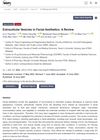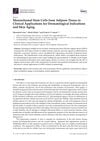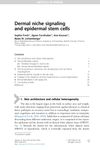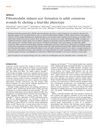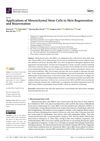Senescence-Induced Reparative Fibroblasts Enable Scarless Wound Healing in Aged Murine Skin
April 2025
in “
bioRxiv (Cold Spring Harbor Laboratory)
”
senescence fibroblasts scarless wound healing hair follicle collagen fibers Prss35+Fib epithelial cells macrophages T cell subpopulations PTN signaling EREG signaling spatial transcriptomics upper dermis regenerative niche scarless healing hair follicles collagen fibroblast epithelial macrophage T cells dermis

TLDR Older mice heal wounds without scars due to special fibroblasts.
The study investigates the mechanisms behind reduced scarring in elderly individuals during wound healing, using aged and young mice as models. It was found that aged mice showed better regenerative outcomes, including increased hair follicle numbers and collagen fiber features similar to normal skin. A specific subpopulation of reparative fibroblasts (Prss35+Fib) was identified in aged mice, which aids regeneration through interactions with epithelial cells, macrophages, and T cell subpopulations via PTN and EREG signaling. Spatial transcriptomics confirmed these interactions and identified the regenerative niche in the upper dermis. EREG treatment improved regeneration in young mice, but aged mice with small wounds lacking these fibroblasts and signaling did not regenerate effectively. These findings enhance the understanding of aging-related regenerative plasticity and suggest new approaches for scarless healing therapies.
